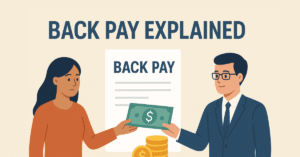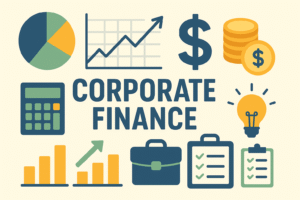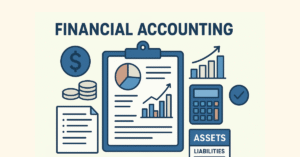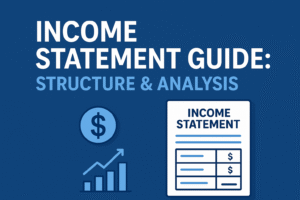In accounting and finance, the term “liability” plays a crucial role in evaluating the financial health of individuals, businesses, and organizations. Whether you’re a student, entrepreneur, or just trying to better manage personal finances, understanding liabilities—especially the difference between current and non-current liabilities—is essential.
What Is a Liability?
A liability is a legal or financial obligation that an individual, business, or organization owes to another party. It represents something the entity is responsible for paying, delivering, or settling in the future—usually in the form of cash, goods, or services.
In accounting, liabilities are recorded on the balance sheet and are one of the core components of the accounting equation:
Assets = Liabilities + Equity
Liabilities can arise from borrowing money, purchasing on credit, unpaid expenses, or any contractual obligation requiring future settlement.
How Liabilities Work?
Liabilities are part of the daily operations of most businesses. They facilitate growth by enabling purchases, hiring, and investment without needing immediate cash outflows.
For example:
- When a business takes a loan, it receives cash now and agrees to repay it over time.
- When a company receives goods from a supplier on credit, it incurs an accounts payable liability.
Liabilities must be properly tracked and managed to ensure that obligations are met on time and that the business remains financially sound.
Other Definitions of Liability
Apart from its financial definition, “liability” can also mean:
- Legal liability: Responsibility under the law, such as in lawsuits or compliance matters.
- Moral or social liability: A duty or obligation based on ethical grounds.
- In insurance, liability refers to an insurer’s obligation to cover certain losses.
In this article, we focus on accounting and financial liabilities.
Types of Liabilities
Liabilities are broadly classified based on their duration, source, and the nature of the obligation. Understanding these categories helps businesses and individuals manage their obligations effectively.
1. Current Liabilities (Short-Term Liabilities)
These are obligations that must be settled within 12 months or within the operating cycle of the business, whichever is longer. They are typically paid using current assets such as cash or accounts receivable.
Examples:
- Accounts payable
- Short-term loans or lines of credit
- Accrued expenses (e.g., wages payable, utilities)
- Taxes payable
- Unearned revenue (customer prepayments)
- Current portion of long-term debt
2. Non-Current Liabilities (Long-Term Liabilities)
These are obligations that are not due within the next 12 months. They often relate to long-term financing or deferred obligations and are paid over time.
Examples:
- Bonds payable
- Long-term loans and mortgages
- Deferred tax liabilities
- Lease obligations (long-term leases)
- Pension or retirement benefit obligations
- Long-term provisions (e.g., environmental cleanup costs)
3. Contingent Liabilities
These are potential obligations that may arise depending on the outcome of a future event. They are not certain but must be disclosed in financial statements if the likelihood of occurrence is reasonably possible and the amount can be estimated.
Examples:
- Pending lawsuits
- Product warranties
- Environmental fines
- Government investigations or audits
4. Operating Liabilities
These arise directly from the company’s core business operations and are usually short-term in nature. They help track day-to-day expenses and business obligations.
Examples:
- Trade payables
- Salaries payable
- Utility bills
- Accrued operating expenses
5. Financial Liabilities
These stem from borrowing or financing activities and can be either short-term or long-term. They typically involve contractual agreements and interest payments.
Examples:
- Notes payable
- Bonds and debentures
- Bank loans
- Lease liabilities
- Interest payable
6. Statutory Liabilities
These are obligations imposed by law or government regulations. Businesses must comply with these regardless of their financial position.
Examples:
- Income taxes payable
- Sales tax payable
- Payroll tax liabilities
- Environmental compliance penalties
Summary Table:
| Type of Liability | Key Feature | Examples |
| Current Liabilities | Payable within 12 months | Accounts payable, accrued wages |
| Non-Current Liabilities | Payable after 12 months | Bonds, long-term loans, pension obligations |
| Contingent Liabilities | Based on uncertain future events | Lawsuits, warranties |
| Operating Liabilities | Arising from daily business operations | Trade payables, utility bills |
| Financial Liabilities | Related to financing or borrowing | Loans, interest-bearing debt |
| Statutory Liabilities | Mandated by law or regulation | Taxes payable, compliance penalties |
Current vs. Non-Current Liabilities
One of the key classifications in accounting is the timing of liability payments, which leads us to two main types:
Current Liabilities
These are short-term obligations expected to be settled within one year (or the company’s operating cycle, if longer). They are a measure of a company’s short-term liquidity.
Examples of Current Liabilities:
- Accounts Payable: Amounts owed to suppliers.
- Short-Term Loans: Debt due within 12 months.
- Accrued Expenses: Wages, interest, or taxes incurred but not yet paid.
- Unearned Revenue: Payment received in advance for goods or services not yet delivered.
- Current Portion of Long-Term Debt: The part of long-term borrowings due within the next year.
Why It Matters:
Current liabilities directly impact a company’s working capital and ability to meet short-term obligations. Failing to manage them can lead to cash flow issues.
Non-Current Liabilities
Also known as long-term liabilities, these are obligations not due within one year. They reflect a company’s long-term financial commitments and are crucial for understanding long-term solvency.
Examples of Non-Current Liabilities:
- Long-Term Loans: Bank loans with repayment terms beyond one year.
- Bonds Payable: Debt securities issued for long-term funding.
- Deferred Tax Liabilities: Taxes owed but postponed to future periods.
- Lease Liabilities (for long-term leases under ASC 842/IFRS 16).
- Pension Obligations: Future employee benefit payments.
Why It Matters:
Non-current liabilities help fund strategic investments, such as expansion, equipment, or real estate. However, excessive long-term debt can hurt credit ratings and long-term stability.
Liabilities vs. Assets
Understanding the difference between assets and liabilities is essential for evaluating financial health. While assets represent what you own, liabilities represent what you owe. Together, they form the foundation of your balance sheet and help determine your net worth or a company’s financial position.
| Aspect | Liabilities | Assets |
| Definition | Obligations or debts | Owned resources with economic value |
| Role | Represent what you owe | Represent what you own |
| Impact | Reduce net worth or equity | Increase net worth or equity |
| Balance Sheet | Found on the right side (with equity) | Found on the left side |
| Example | Loan, accounts payable | Cash, inventory, real estate |
In short, assets bring in money, while liabilities take money out.
Liabilities vs. Expenses
Although both involve money leaving a business, they are not the same:
| Aspect | Liabilities | Expenses |
| Definition | Outstanding obligations | Costs incurred in the course of business |
| Accounting | Reported on the balance sheet | Reported on the income statement |
| Timing | May not yet be paid | Already consumed or used |
| Example | Loan payable, accrued rent | Rent expense, salaries, utilities |
Liabilities can lead to future expenses, but expenses reflect consumption that already happened.
Example of Liabilities
Let’s say a retail store has the following obligations:
- $20,000 owed to suppliers (accounts payable)
- $50,000 long-term bank loan
- $3,000 in unpaid wages
This business has:
- Current Liabilities: $23,000
- Non-Current Liabilities: $50,000
- Total liabilities = $73,000
How Do I Know If Something Is a Liability?
Ask yourself:
- Is there an obligation to pay or deliver something in the future?
- Did this obligation arise from a past event or transaction?
- Can the obligation be measured reliably?
If the answer is “yes” to these, it’s likely a liability.
What Are Examples of Liabilities That Individuals or Households Have?
Individuals also incur liabilities in daily life. Common examples include:
- Mortgage: Long-term liability for purchasing a home.
- Credit Card Debt: Short-term liability due monthly.
- Car Loans: Can be current or non-current, depending on term.
- Student Loans: Long-term liabilities with installment payments.
- Utility Bills: Often short-term liabilities until paid.
These obligations affect personal net worth and financial planning.
Final Thoughts
Understanding liabilities—especially distinguishing current from non-current ones—is fundamental in both business and personal finance. Liabilities are not inherently bad; in fact, they often fuel growth and investment. However, proper management, classification, and planning are essential to avoid financial strain and ensure long-term stability.







